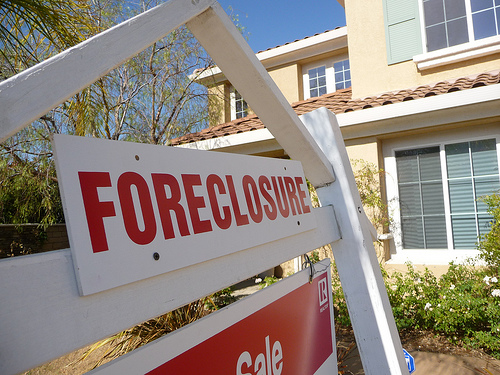A top watchdog for the government’s bailout programs today blasted the Treasury Department’s main homeowner rescue program, a multibillion-dollar effort that’s done little to combat the still-roiling housing crisis. The special inspector general for TARP, Neil Barofsky, released the results of a new audit (PDF) today criticizing the paltry results of the Home Affordable Modification Program (HAMP) and the Treasury’s efforts to airbrush the effects of its troubled program. As the audit points out, Treasury officials initially said the program would “help up to 3 to 4 million at-risk homeowners avoid foreclosure,” but months later the Treasury made a quiet revision. Now, the department says the program aims to extend 3 to 4 million offers to homeowners—not necessarily real help. “Continuing to frame HAMP’s success around the number of ‘offers’ extended is simply not sufficient,” the audit says.
Barofsky’s audit also highlights the abysmally low number of permanent mortgage modifications—somewhat lasting, legitimate relief for homeowners—which total a meager 170,000 so far. The reasons for HAMP’s flop, Barofsky says, are three-fold: vaguely defined rules and constant revising of those rules; allowing mortgage servicers to begin modifications without getting all the required paperwork from homeowners; and a lack of promotion and marketing of HAMP by the Treasury. Too few people, Barofsky concludes, just didn’t know about HAMP’s offerings, if they know of the program at all.
Meanwhile, as the program limps along, the housing crisis rumbles onward. One telling statistic the SIGTARP audit found was that the average homeowner eligible for HAMP is underwater, meaning they owe more on their loan than their house is worth. And while homeowners make payments and wait for their equity to return, the Treasury, SIGTARP found, has mostly shied away from reducing homeowners’ principal owed amounts—arguably the fastest way to help struggling homeowners. The watchdog paints a bleak portrait of a program that’s done little to help beleaguered homeowners. And when comparing HAMP to the swfitness and effectiveness of the Treasury’s rescue of the nation’s banking system, it’s little wonder average Americans are so angry with Wall Street and their government.
















